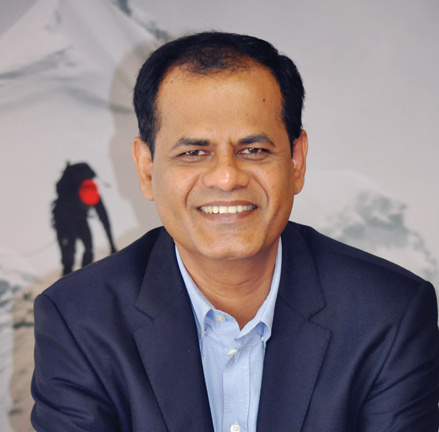 —Prashant Vatkar, Managing Director, HIL Ltd
—Prashant Vatkar, Managing Director, HIL Ltd
Charminar has been a very popular brand for roofing. Tell us about how this brand has grown over the years.
HIL commenced production in 1946. It was a time shrouded in mystery of what independence might bring. But one thing was clear that the country needed hundreds of products so that food, clothing and shelter could be made available to the nation’s 250 million people. In that sense HIL’s success was assured. But it did need a quality product to underwrite continued triumph. This gave way to the birth of Charminar brand.
Charminar developed a range of different product profiles designed to withstand the vengeance of the summers and the onslaught of the rains. The Charminar brand was readily accepted by a public waiting to find affordable shelter.
The brand performance and acceptance were so high that it created new segments in rural housing, industrial and warehousing. The first plant in Hyderabad, soon realised it would be difficult to meet the increasing demand for the Charminar brand with just one plant. Over the next few years, it established manufacturing facilities at strategic locations. This enabled the company to maintain a tight leash on costs and reduce, in particular, transport charges.
Today, brand Charminar is synonymous with the country’s largest manufacturer and sellers of fibre cement sheets and metal roofing sheets with over 2,600 stockist partners, over 6,500 retail partners that are served by eight manufacturing plants and 52 depots.
It’s a matter of pride for Charminar that over 80 per cent of its trade partners have been with the company for over 50 years. Literally, second and third generation is expanding their business association. It is this trust, belief, ethical business practices the company follows and adapts. These trade partners are today an integral part of the family and play a pivotal role in strategy formulation and idea generation.
Charminar had played an important role in shaping the Indian roofing industry and is a thought leader in its space. A number of definite benchmarks present in the industry have been set up by Charminar and its steps for self-betterment have led to raising the bar for others in the sector.
What are advantages and limitations of cement fibre sheets?
For the last 60 years, Charminar corrugated fibre cement sheets have proved to be the most affordable and offer best-in-class durability. Our fibre cement sheets exhibit strong thermal insulation properties, and are rust proof. This makes it the most preferred product to meet the criteria for rural roofing needs. These are highly recommended for chemical industries, factory roofing and especially for poultry and food grain storage as they manage the differential temperature very well. This product has made it possible for economically weaker sectors to progress from their traditional thatched roofs to highly durable and cost effective roofing solutions.
In terms of limitations, fibre cement sheets can be considered less aesthetically appealing with limited colour options.
When did HIL diversify into coloured steel roofing sheets and how has the market growth been?
The expansion towards the coloured steel roofing is a well calculated step. We have an aggressive business growth plan in place. Leveraging HIL’s extensive sales and distribution network in the building material industry, we plan to enter and penetrate all the major markets within a year. We will adopt innovative practices to educate and increase consumer awareness of our product proposition and our high end quality. We expect a substantial growth in demand this year. However, it is too early to comment or share figures at this point of time.
How do you see the years ahead for Charminar brand and what would you regard as the primary growth drivers?
According to India Census 2011 the rural population in India is 68.84 per cent which translates to nearly 0.9 billion people residing in rural areas. HIL’s AC durable sheets cater largely to the rural segment of the country. Thus greater rural penetration will further increase the scope for growth.
Secondly, the government initiatives on promoting agriculture like minimum support price for crops, agriculture insurance, loan waivers has boosted the spending power of rural India. This will positively impact the Indian fibre cement industry and it is expected to thrive in the coming years.
Tell us how the “Charminar” brand complements HIL’s other brand – Aerocon to create a complete suite of products.
HIL is the leading building material company of India, catering to the changing needs of a developing nation to the best of its knowledge, capability and capacity across all segments related to construction.
Charminar provides affordable, durable and sustainable roofing solutions for rural market and customer. With a mission that one day every citizen has a house with a solid roof over his head.
Aerocon, on the other hand provides energy efficient, superior quality and green walling and piping (CPVC & CPVC) solutions for the urban market which are targeted to the builders, architects and interior designers. We intend to provide smart material for the construction of the smart cities.











